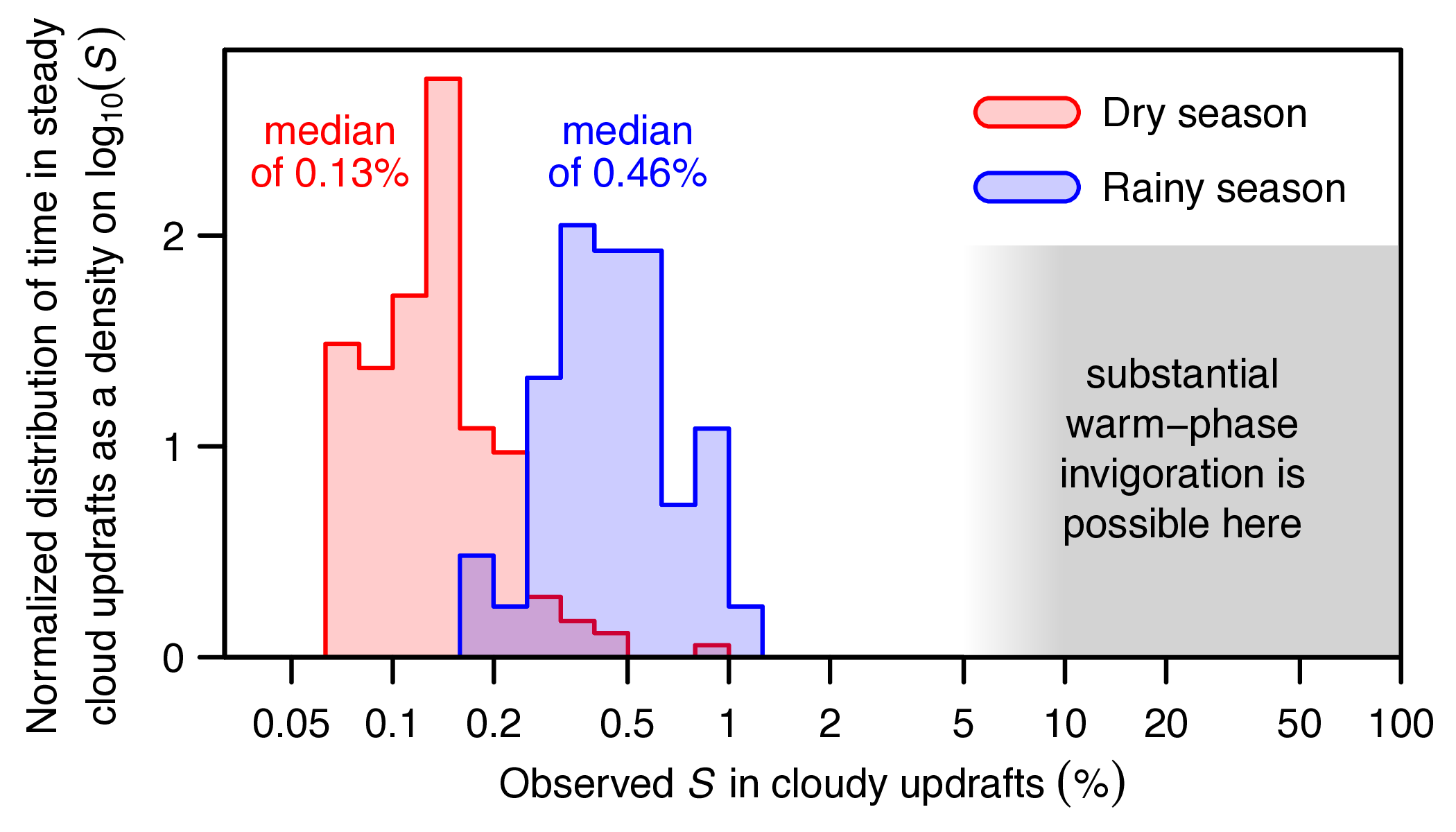Romps, A method for calculating reliable supersaturation reveals low values in tropical rainy-season clouds, JAS, 2025
Summary
Paper
Description
A popular hypothesis is that air pollution increases the speeds of cloud updrafts. Although the existence of this effect remains unsettled as an empirical matter, a theory has been proposed for how it might work: the warm-phase mechanism. In this theory, more air pollution leads to more cloud droplets, which can hasten the release of latent heat, leading to a higher buoyancy and, thus, a higher updraft speed. This mechanism relies, however, on high supersaturation in unpolluted clouds, on the order of 10%. People have used aircraft to probe the supersaturation in clouds and have only found median supersaturation in the range of 0.1 to 0.3%, but those were all of continental clouds, which might have already had their supersaturation lowered by air pollution.
To look for high supersaturation in relatively unpolluted clouds, this study uses aircraft data on clouds over the Amazon during its rainy season. In the rainy season, the frequent rains sweep up the air pollution, leading to relatively unpolluted skies and clouds. It is found that the median supersaturation in these unpolluted clouds is only 0.5%, which is well below the 10% required for air pollution to have a substantial effect. Along the way, it is shown how important it is to focus on parcels of cloudy air for which the supersaturation can be reliably measured. And it is found that the supersaturation in ascending clouds scales with air pollution (i.e., the boundary-layer aerosol concentration) to the -2/3 power, as predicted by Romps et al. (2023).

Normalized distribution of the Amazon's (red) dry-season cloud updrafts and (blue) rainy-season cloud updrafts, presented as the fraction of time per unit interval of log10(S).